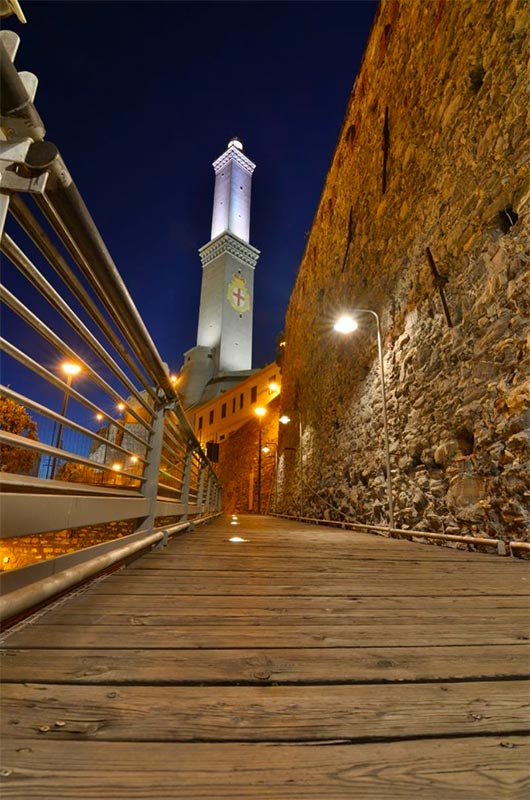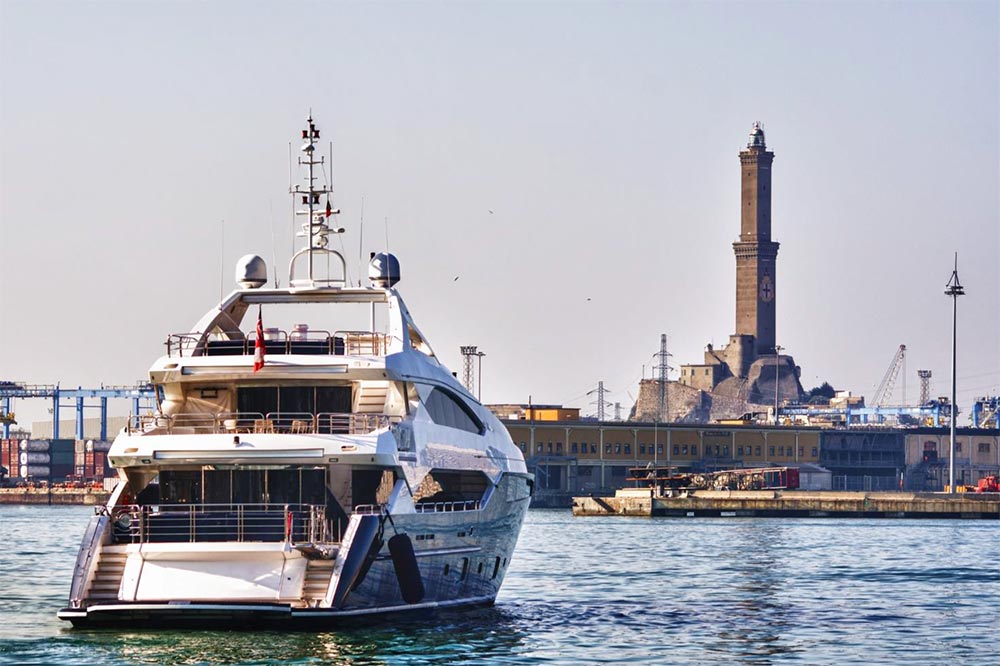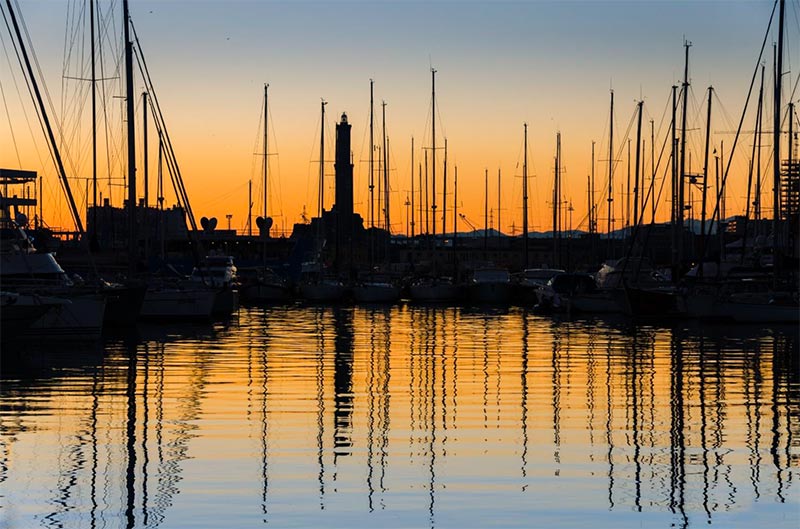History and curiosities of the Lanterna di Genova that guides vessels to safely dock in the waters of Marina Porto Antico
Choosing Marina Porto Antico means mooring just steps away from the history and beauty of the historic center of Genoa, the captivating capital of Liguria. Still at sea, before reaching the port, just look up to admire the Lanterna, the symbol of the capital city of Liguria, and breathe in the power and history that Genoa holds.
The Lanterna, which today accompanies the journey of vessels and sailors, at 77 meters high, is the tallest lighthouse in the Mediterranean. Its construction on the promontory of Capo di Faro dates back to 1543, but even before it, another tower stood in the same place. A fortified outpost outside the city, built, according to unofficial sources, in 1128, on top of which bundles of heather or broom wood were burned to signal the port’s entrance to sailors and to communicate possible sightings of enemy vessels, modulating the smoke’s intensity by day and the flames by night. A legend tells that to prevent the possibility of a similar tower being built, its designer was thrown into the void from the top of his work, and a similar legend says he was thrown down to avoid being paid.
From bundles of wood to olive oil: the first technological revolution of the lighthouse

To better identify the Lanterna with the city, in 1340, the coat of arms of the municipality of Genoa was painted on the top of the lower tower. Towards the end of the 14th century, following the conquest of Famagusta by the Republic of Genoa, Giacomo Lusignano, uncle of the King of Cyprus, Peter Lusignano, was imprisoned inside the tower, used as a prison, for five years, and it was inside the Lanterna that his wife gave birth to Giano, their son. In 1498, the Lanterna had the honor of receiving a visit from the great master Leonardo da Vinci, who came for an inspection of the Genoese fortifications, following Ludovico il Moro. Destruction and birth of the new Lanterna At the beginning of the 1500s, Louis XII chose the promontory of Capo di Faro as the ideal place to erect a fortress nicknamed the Briglia.
In 1514, during the bombardment of the fortress by Genoese forces, led by Andrea Doria, engaged in defending Genoa against French invaders, the Lanterna was hit and partially demolished. Rebuilt in 1543, it resumed its function as a guide for sailors arriving in Liguria, in the waters of the beautiful and wealthy city. But the misfortunes for the symbol of the city of Genoa did not seem to end. In 1602, a lightning strike hit the lantern, demolishing part of the upper tower’s battlements. Following the incident, in 1603, a marble plaque was made bearing the inscription “Jesus Cristus rex venit in pace at Deus homo factus est”. The plaque is still visible at the base of the tower today. But in the 1600s, the Lanterna also became the stage for daring tightrope walkers who performed on ropes stretched from the top of the structure to vessels moored in the port.
From the mid-1800s, the technological revolution became increasingly pressing. A new system of optics, much more powerful and precise (Fresnel lenses), was installed on the lantern. The fuel used, still olive oil, was soon replaced in 1898 with acetylene gas, in 1900 with pressurized oil, and finally in 1936 with electricity. Today, the Lanterna, having also withstood the Second World War, still stands majestically to guide vessels crossing Liguria. And even those mooring in Genoa, at Marina Porto Antico, by looking up towards the sea, can see it in all its majestic beauty, symbol and memory of the city of Genoa.



